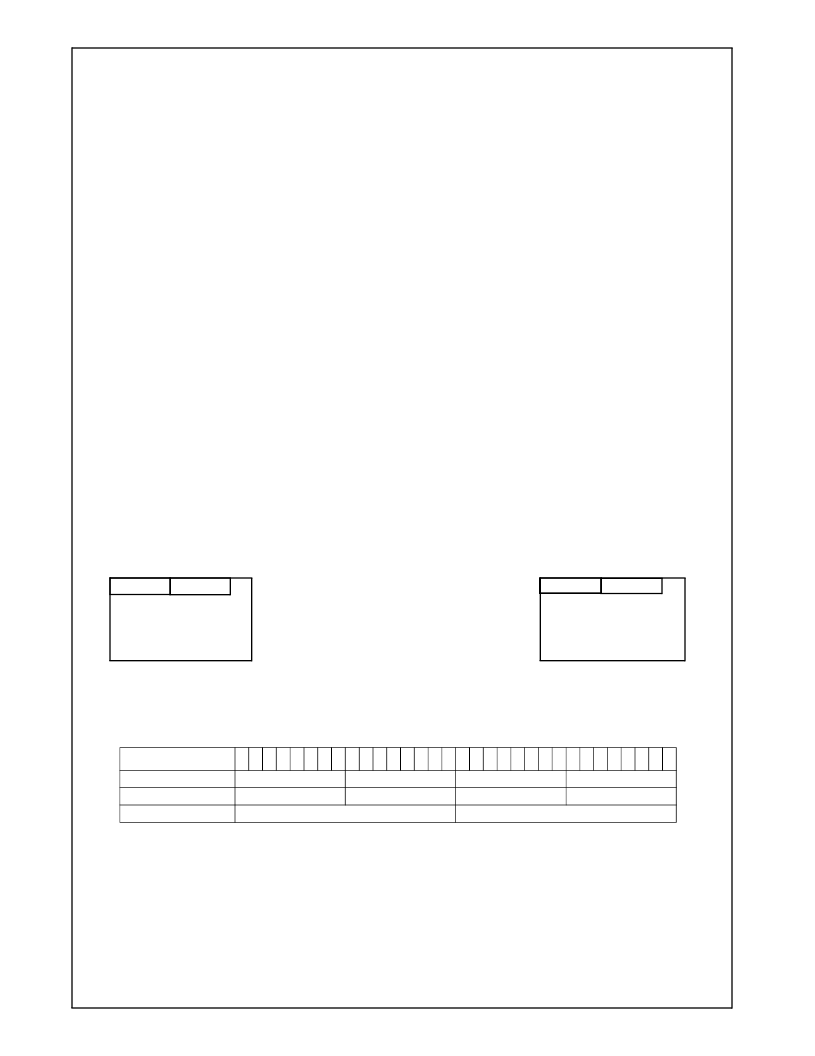- 您現(xiàn)在的位置:買賣IC網(wǎng) > PDF目錄358620 > 30046-23 (NATIONAL SEMICONDUCTOR CORP) Low Power Integrated x86-Compatible 32-Bit Geode GXLV Processor(低功耗集成兼容X86的32位 Geode GXLV技術(shù)處理器) PDF資料下載
參數(shù)資料
| 型號: | 30046-23 |
| 廠商: | NATIONAL SEMICONDUCTOR CORP |
| 元件分類: | 微控制器/微處理器 |
| 英文描述: | Low Power Integrated x86-Compatible 32-Bit Geode GXLV Processor(低功耗集成兼容X86的32位 Geode GXLV技術(shù)處理器) |
| 中文描述: | 32-BIT, 200 MHz, MICROPROCESSOR, CPGA320 |
| 封裝: | SPGA-320 |
| 文件頁數(shù): | 140/247頁 |
| 文件大小: | 4379K |
| 代理商: | 30046-23 |
第1頁第2頁第3頁第4頁第5頁第6頁第7頁第8頁第9頁第10頁第11頁第12頁第13頁第14頁第15頁第16頁第17頁第18頁第19頁第20頁第21頁第22頁第23頁第24頁第25頁第26頁第27頁第28頁第29頁第30頁第31頁第32頁第33頁第34頁第35頁第36頁第37頁第38頁第39頁第40頁第41頁第42頁第43頁第44頁第45頁第46頁第47頁第48頁第49頁第50頁第51頁第52頁第53頁第54頁第55頁第56頁第57頁第58頁第59頁第60頁第61頁第62頁第63頁第64頁第65頁第66頁第67頁第68頁第69頁第70頁第71頁第72頁第73頁第74頁第75頁第76頁第77頁第78頁第79頁第80頁第81頁第82頁第83頁第84頁第85頁第86頁第87頁第88頁第89頁第90頁第91頁第92頁第93頁第94頁第95頁第96頁第97頁第98頁第99頁第100頁第101頁第102頁第103頁第104頁第105頁第106頁第107頁第108頁第109頁第110頁第111頁第112頁第113頁第114頁第115頁第116頁第117頁第118頁第119頁第120頁第121頁第122頁第123頁第124頁第125頁第126頁第127頁第128頁第129頁第130頁第131頁第132頁第133頁第134頁第135頁第136頁第137頁第138頁第139頁當(dāng)前第140頁第141頁第142頁第143頁第144頁第145頁第146頁第147頁第148頁第149頁第150頁第151頁第152頁第153頁第154頁第155頁第156頁第157頁第158頁第159頁第160頁第161頁第162頁第163頁第164頁第165頁第166頁第167頁第168頁第169頁第170頁第171頁第172頁第173頁第174頁第175頁第176頁第177頁第178頁第179頁第180頁第181頁第182頁第183頁第184頁第185頁第186頁第187頁第188頁第189頁第190頁第191頁第192頁第193頁第194頁第195頁第196頁第197頁第198頁第199頁第200頁第201頁第202頁第203頁第204頁第205頁第206頁第207頁第208頁第209頁第210頁第211頁第212頁第213頁第214頁第215頁第216頁第217頁第218頁第219頁第220頁第221頁第222頁第223頁第224頁第225頁第226頁第227頁第228頁第229頁第230頁第231頁第232頁第233頁第234頁第235頁第236頁第237頁第238頁第239頁第240頁第241頁第242頁第243頁第244頁第245頁第246頁第247頁

www.national.com
140
Revision 1.2
Integrated Functions (
Continued
)
G
4.5.7
The GXLV processor supports a maximum of 4 MB of
graphics memory and will map it to an address space (see
Figure 4-2 on page 98) higher than the maximum amount
of installed RAM. The graphics memory aperture physi-
cally resides at the top of the installed system RAM. The
start address and size of the graphics memory aperture
are programmable on 512 KB boundaries. Typically, the
system BIOS sets the size and start address of the graph-
ics memory aperture during the boot process based on
the amount of installed RAM, user defined CMOS set-
tings, hard coded, etc. The graphics pipeline and display
controller address the graphics memory with a 20-bit off-
set (address bits [21:2]) and four byte enables into the
graphics memory aperture. The graphics memory stores
several buffers that are used to generate the display: the
frame buffer, compressed display buffer, VGA memory,
and cursor pattern(s). Any remaining off-screen memory
within the graphics aperture may be used by the display
driver as desired or not at all.
Graphics Memory Map
4.5.7.1
The display controller contains a number of registers that
allow full programmability of the graphics memory organi-
zation. This includes starting offsets for each of the buffer
regions described above, line delta parameters for the
frame buffer and compression buffer, as well as com-
pressed line-buffer size information. The starting offsets
DC Memory Organization Registers
for the various buffers are programmable for a high
degree of flexibility in memory organization.
4.5.7.2
Frame Buffer and Compression Buffer Orga-
nization
The GXLV processor supports primary display modes
640x480, 800x600, and 1024x768 at both 8-bpp and 16-
bpp, and 1280x1024 at 8-bpp. Pixels are packed into
DWORDs as shown in Figure 4-15.
In order to simplify address calculations by the rendering
hardware, the frame buffer is organized in an XY fashion
where the offset is simply a concatenation of the X and Y
pixel addresses. All 8-bpp display modes with the excep-
tion of the 1280x1024 resolution will use a 1024-byte line
delta between the starting offsets of adjacent lines. All 16-
bpp display modes and 1280x1024x8-bpp display modes
will use a 2048-byte line delta between the starting offsets
of adjacent lines. If there is room, the space between the
end of a line and the start of the next line will be filled with
the compressed display data for that line, thus allowing
efficient memory utilization. For 1024x768 display modes,
the frame-buffer line size is the same as the line delta, so
no room is left for the compressed display data between
lines. In this case, the compressed display buffer begins
at the end of the frame buffer region and is linearly
mapped.
Figure 4-15. Pixel Arrangement Within a DWORD
DWORD
Bit Position
31302928 2726252423 2221201918 1716151413 121110 9 8 7 6 5 4 3 2 1 0
Address
Pixel Org - 8-bpp
Pixel Org - 16-bpp
3h
(3,0)
2h
(2,0)
1h
(1,0)
0h
(0,0)
(1,0)
(0,0)
(1023,0)
(1023, 1023)
(0, 0)
(0, 1023)
DWORD 0
(2047,0)
(0, 0)
(0, 1023)
8-bpp up to 1024x768
16-bpp up to 1024x768
8-bpp up to 1280x1024
(2047, 1023)
DWORD 0
DWORD 1
...
...
DWORD 1
相關(guān)PDF資料 |
PDF描述 |
|---|---|
| 300471U | Radial, -55dotc, long life wsitching-power |
| 300CNQ | SCHOTTKY RECTIFIER |
| 300CNQ035 | SCHOTTKY RECTIFIER |
| 300CNQ040 | SCHOTTKY RECTIFIER |
| 300CNQ045 | SCHOTTKY RECTIFIER |
相關(guān)代理商/技術(shù)參數(shù) |
參數(shù)描述 |
|---|---|
| 30046-46L | 制造商:LENOX 功能描述:HOLE SAW BI-METAL 73MM |
| 300-466A | 制造商:LG Corporation 功能描述:CABINET ASSYCMT-9325 |
| 300-466B | 制造商:LG Corporation 功能描述:CABINET ASSYCMT-9324 |
| 300-466K | 制造商:LG Corporation 功能描述:CABINET ASSYCMT-9322 |
| 300-466R | 制造商:LG Corporation 功能描述:FRONT CABINET |
發(fā)布緊急采購,3分鐘左右您將得到回復(fù)。